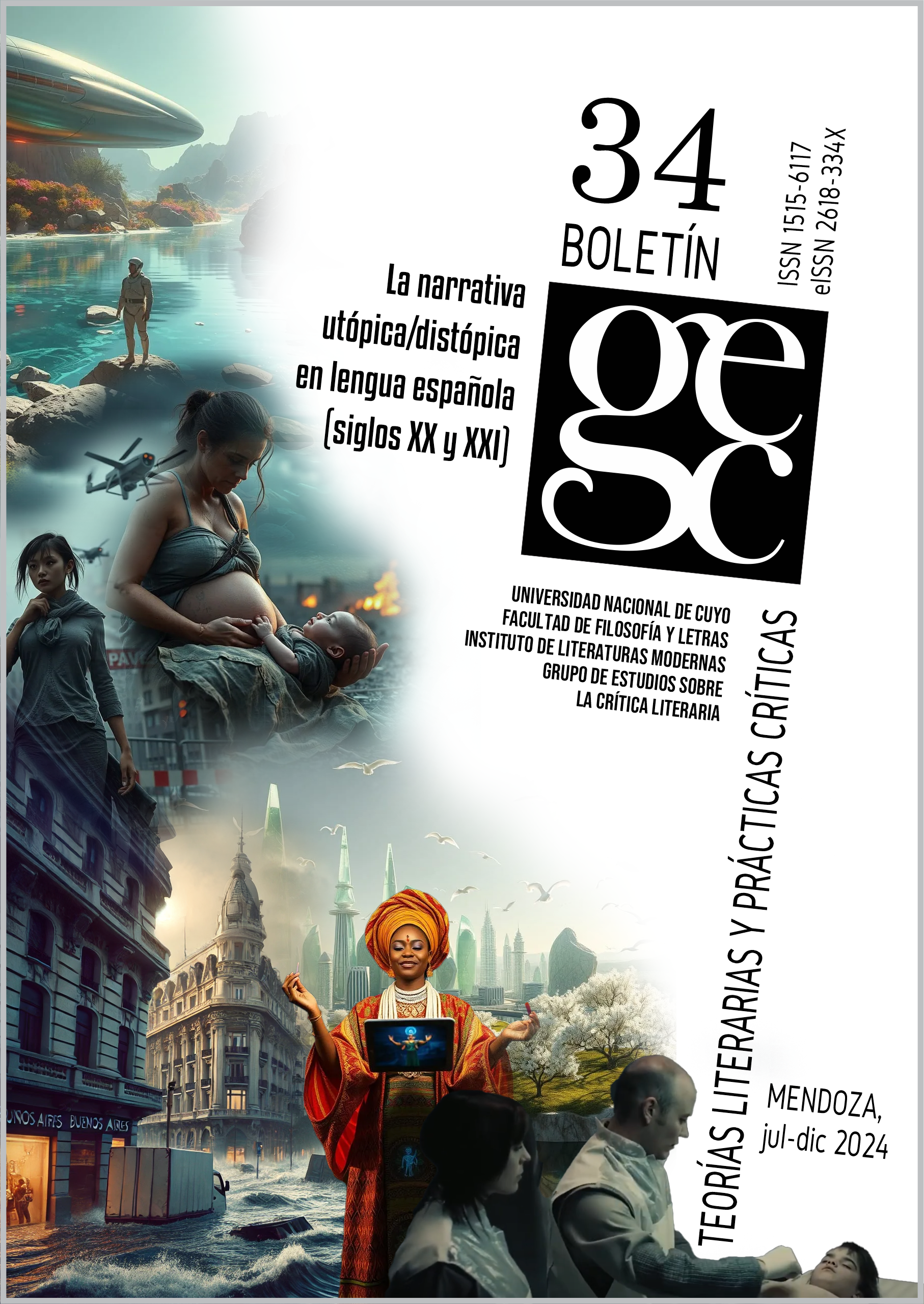Depicting a Fateful Future: Emergency and Exception Policies in Two Contemporary Latin American Novels
DOI:
https://doi.org/10.48162/rev.43.067Keywords:
dystopia, cloning, Artificial Intelligence, segmentation, exception policiesAbstract
This paper delves into a descriptive analysis of the programmatic city as depicted in the novels El sueño de Mariana (2008) by Salvadoran writer Jorge Galán, and Angosta (2003) by Colombian writer Héctor Abad Faciolince. The study seeks to answer the following questions: a) What is the purpose of organizing urban landmarks within the narrative structure? b) How is the urban dystopia shaped? c) What stylistic features and narrative-compositional strategies do the authors employ? Drawing on these inquiries, we describe the mechanisms of intervention in civic life portrayed in both fictions, where artificial intelligence, cloning, cybernetics, and robotics are utilized as segmentation, separation, and exclusion tools, foretelling a dystopian future.
References
Abad Faciolince, H. (2020). Angosta. Alfaguara.
Augé, M. (2000). Los “no lugares”, espacios del anonimato. Gedisa.
Boyer, M. Ch. (1996). CyberCities: Visual perception in the age of electronic communicationPrinceton Architectural Press.
Domingo, A. (2008). Descenso literario a los infiernos demográficos. Anagrama.
Gaja i Díaz, F. (2016). Futurópolis: Entre la tecnoutopía y la ecodistopía, o viceversa. Díaz & Pons.
Galán, J. (2008). El sueño de Mariana. F&G Editores.
Galindo, L. (2005, junio). “La ciberciudad: Una visión de lo social y lo urbano desde la cibernética, la sistémica y la comunicología”. Andamios 1(2), 149-172. https://www.scielo.org.mx/pdf/anda/v1n2/v1n2a7.pdf
Pineda, A. (Coord.) (2021). Poder, ideología y propaganda en la ficción distópica. Tirant lo Blanch.
Waelder Laso, P. (2019, octubre). Hackear la ciudad algorítmica: Arte urbano y nuevos medios. Hispanismes, (14), 1-19. https://doi.org/10.4000/hispanismes.417
Downloads
Published
How to Cite
Issue
Section
License
Copyright (c) 2024 Luis Mora-Ballesteros

This work is licensed under a Creative Commons Attribution-NonCommercial-NoDerivatives 4.0 International License.
Aquellos autores/as que tengan publicaciones en esta revista, aceptan los términos siguientes:
- Los autores/as conservarán sus derechos de autor y garantizarán a la revista el derecho de primera publicación de su obra, el cual estará simultáneamente sujeto a la Licencia de reconocimiento de Creative Commons que permite a terceros compartir la obra siempre que no se use para fines comerciales, siempre que se indique su autor y su primera publicación en esta revista, y siempre que se mencionen la existencia y las especificaciones de esta licencia de uso.
- Los autores/as podrán adoptar otros acuerdos de licencia no exclusiva de distribución de la versión de la obra publicada (p. ej.: depositarla en un archivo telemático institucional o publicarla en un volumen monográfico) siempre que se indique la publicación inicial en esta revista y se cumplan las otras condiciones mencionadas arriba.
- Se permite y recomienda a los autores/as difundir su obra a través de Internet (p. ej.: en archivos telemáticos institucionales o en su página web) antes y durante el proceso de envío, lo cual puede producir intercambios interesantes y aumentar las citas de la obra publicada. (Véase El efecto del acceso abierto).














